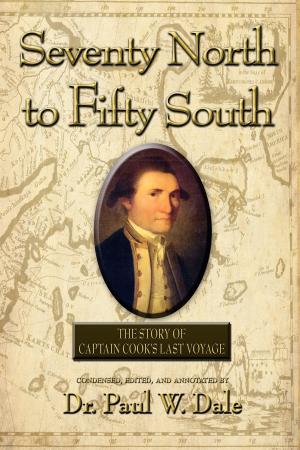Conquest, Tribute and Trade
How the Quest for Precious Metals Gave Birth to Globalization
Nonfiction, History, Americas, Latin America, Business & Finance, Economics, Economic History, World History| Author: | Howard J. Erlichman | ISBN: | 1230000277303 |
| Publisher: | Howard J. Erlichman | Publication: | August 6, 2016 |
| Imprint: | Language: | English |
| Author: | Howard J. Erlichman |
| ISBN: | 1230000277303 |
| Publisher: | Howard J. Erlichman |
| Publication: | August 6, 2016 |
| Imprint: | |
| Language: | English |
This new edition of Conquest, Tribute and Trade: How the Quest for Precious Metals Gave Birth to Globalization (2016) has been revised to improve the clarity of the text, maps and end-notes. The book itself attempts to explain the birth of globalization in a new way and address three interrelated developments which have been under-analyzed, pigeon-holed or even ignored.
First, how and why the discovery, extraction and distribution of precious metals -- gold, copper and, above all, silver -- enabled the closely-related Portuguese, Spanish and Dutch to supersede the great Italian city-states, neutralize the Ottomans and overturn centuries of Muslim domination in Africa and Asia during the course of the sixteenth century.
Second, how and why the Europeans squandered much of the metallic wealth of Africa, the Americas and the Far East on inconclusive military affairs, exploited (and often destroyed) indigenous societies across the globe and left behind a wake of east-west animosities which has lasted for five centuries.
And third, how and why a breakaway portion of the Spanish Netherlands, the Dutch Republic, co-opted many of the achievements of the Iberians, gained control of increasingly large stocks of precious metals between 1590 and 1609 and served as a commercial “bridge” to the later British Empire (and the United States).
The book is intended to serve as a very modern tale of business and economic history which just happens to be set in the sixteenth century. The narrative details the central, driving, multidimensional (and almost unbelievable) roles played by a handful of mines and metallurgical works; the larger-than-life characters who discovered, financed or exploited these mineral resources and created the world’s first multinational corporations; and the spectacular squander, measured in financial and human terms, which resulted from a never-ending series of military campaigns and helped to shift the balance of global power to (and from) a succession of would-be empires.
Conquest, Tribute and Trade also helps to explain how and why Europe’s remarkable geographical conquests in this one century, the sixteenth, laid a foundation of Western dominance (and animosities) which has lasted for roughly five hundred years, introduced patterns of economic development which are being repeated in the twenty-first and generated a host of lessons to be studied by anyone interested in the processes through which commercial empires are won and lost.
This new edition of Conquest, Tribute and Trade: How the Quest for Precious Metals Gave Birth to Globalization (2016) has been revised to improve the clarity of the text, maps and end-notes. The book itself attempts to explain the birth of globalization in a new way and address three interrelated developments which have been under-analyzed, pigeon-holed or even ignored.
First, how and why the discovery, extraction and distribution of precious metals -- gold, copper and, above all, silver -- enabled the closely-related Portuguese, Spanish and Dutch to supersede the great Italian city-states, neutralize the Ottomans and overturn centuries of Muslim domination in Africa and Asia during the course of the sixteenth century.
Second, how and why the Europeans squandered much of the metallic wealth of Africa, the Americas and the Far East on inconclusive military affairs, exploited (and often destroyed) indigenous societies across the globe and left behind a wake of east-west animosities which has lasted for five centuries.
And third, how and why a breakaway portion of the Spanish Netherlands, the Dutch Republic, co-opted many of the achievements of the Iberians, gained control of increasingly large stocks of precious metals between 1590 and 1609 and served as a commercial “bridge” to the later British Empire (and the United States).
The book is intended to serve as a very modern tale of business and economic history which just happens to be set in the sixteenth century. The narrative details the central, driving, multidimensional (and almost unbelievable) roles played by a handful of mines and metallurgical works; the larger-than-life characters who discovered, financed or exploited these mineral resources and created the world’s first multinational corporations; and the spectacular squander, measured in financial and human terms, which resulted from a never-ending series of military campaigns and helped to shift the balance of global power to (and from) a succession of would-be empires.
Conquest, Tribute and Trade also helps to explain how and why Europe’s remarkable geographical conquests in this one century, the sixteenth, laid a foundation of Western dominance (and animosities) which has lasted for roughly five hundred years, introduced patterns of economic development which are being repeated in the twenty-first and generated a host of lessons to be studied by anyone interested in the processes through which commercial empires are won and lost.















